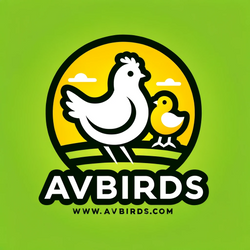You’re gearing up for Thanksgiving in California, and picking the right live turkey breeds for thanksgiving can feel like a full-time job. In this guide, you’ll get friendly, practical tips on breed traits, regulations, setup needs, and where to find your bird—so you can focus on the feast.
Ready to wade through heritage vs commercial types? Let’s dive in.
Compare Breed Characteristics
Choosing between heritage and production strains comes down to growth, flavor, and cost. Which bird fits your holiday vision?
Heritage Turkeys
Heritage breeds grow naturally over 26–30 weeks, offering:
- A 50:50 white-to-dark meat ratio (richer, almost gamey taste) (Poultry Extension)
- Strong foraging instincts and disease resistance
- Natural mating and mothering skills
Popular heritage varieties include Bourbon Red, Narragansett, and Standard Bronze.
Commercial Production Turkeys
Broad-Breasted White or Bronze strains hit market size fast—16–22 weeks on average—with:
- About 70% breast meat yield (Kowalski Mountain)
- Excellent feed conversion and affordability
- Limited natural behaviors (can’t mate or forage effectively)
| Breed Type | Growth Time | Meat Ratio (White:Dark) | Cost Estimate |
|---|---|---|---|
| Heritage (e.g., Narragansett) | 26–30 weeks | 50:50 | 2–3× commercial |
| Broad-Breasted White/Bronze | 16–22 weeks | 70:30 | Standard market |
Balance Flavor And Yield
You want flavor without breaking the bank. Here’s the lowdown.
Growth Rate And Weight
On average, plan for 1.5 pounds per guest since each person eats about 8 ounces (Texas A&M AgriLife). If you host 10 people, a 15-pound bird should suffice. Faster-growing commercial birds hit target weight sooner, while heritage turkeys need extra weeks.
Meat Quality And Taste
Heritage birds tend to have darker, richer meat thanks to their active lives and diverse diet. Commercial breeds offer milder flavor and more white meat if you’re catering to picky eaters.
Understand California Regulations
Before you buy, check rules that apply in your county.
Permits And Regulations
Many California counties require a permit to raise turkeys—especially in suburban zones. Review live turkey regulations in california and secure any needed live turkey permits for thanksgiving early.
Seasonality And Availability
Live turkey stocks can sell out by early fall. Monitor live turkey availability in california and connect with a local live turkey farm in california to lock in your breed.
Set Up Your Turkey Home
A happy bird is a healthy bird. Here’s how to get started.
Housing Requirements
Provide at least 10 square feet per bird in a sheltered run, plus secure nighttime coops. For details see our live turkey housing requirements guide.
Feeding And Care
Offer a balanced turkey starter feed, fresh water, and grit for digestion. Learn feeding schedules in our live turkey feeding guide. Keep an eye on behavior—find tips at live turkey behavior characteristics.
Source Your Turkey Locally
Finding a nearby supplier saves stress on transport day.
Local Farms And Suppliers
Scan county fairs, farmer’s markets, or small ranches. You can also order poults early at avbirds.com for a head start (see avbirds.com/turkey-poults-and-hatching-eggs) or reserve holiday-ready birds via avbirds.com/thanksgiving-turkey.
Buying And Transport Tips
Scout local classified ads or use buying live turkeys near me. Transport birds in ventilated carriers, limit travel time, and acclimate them slowly to your coop.
Key Takeaways
- Heritage vs commercial breeds trade speed for flavor
- Budget about 1.5 pounds of live weight per guest
- Secure county permits and spot your bird early
- Prep housing, feed, and water before October
- Source locally to reduce stress and support community farms
Now that you know how to choose live turkey breeds for thanksgiving in California, pick a strain that suits your taste and timeline. Got a favorite breed or sourcing tip? Share it in the comments so everyone can join in.

